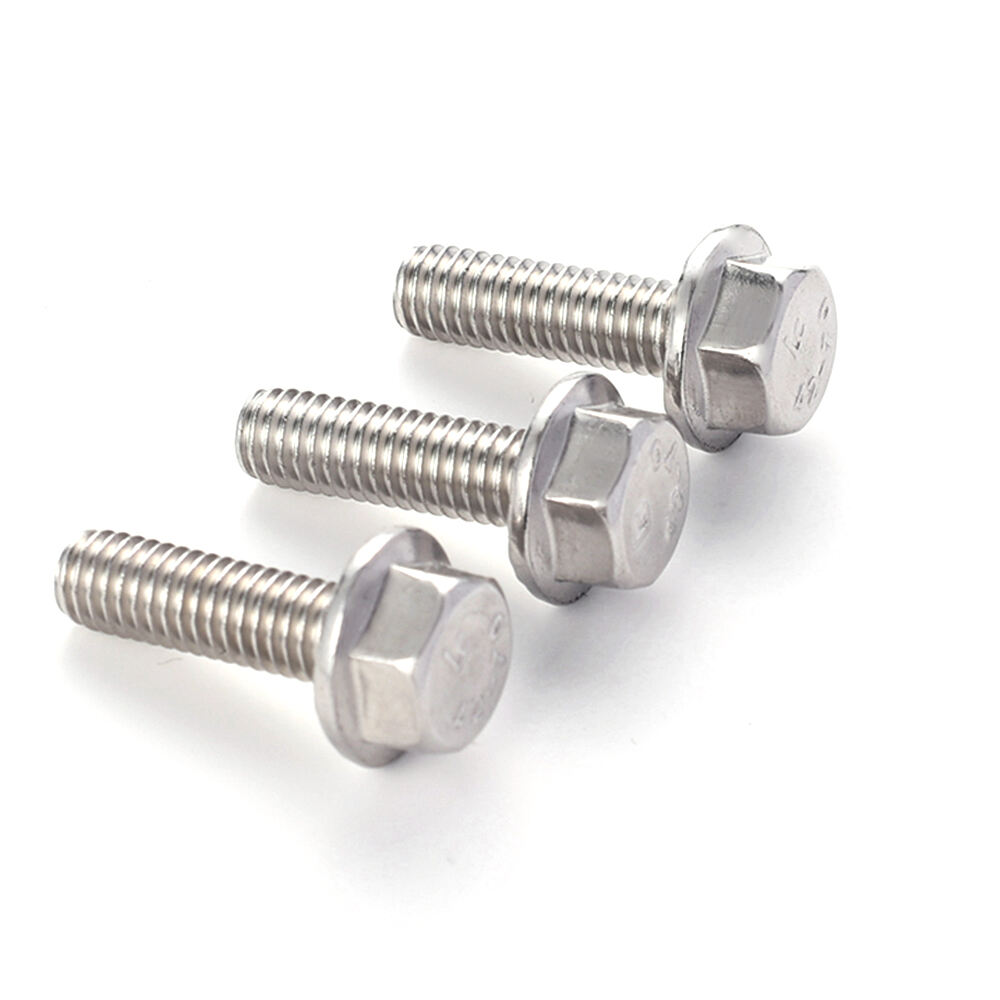Flange bolts are a unique kind of fasteners for connecting two or more things. In fact, you use used them everywhere, construction wise and in engineering products and manufacturing. Here, Wuxi Sunny will discuss flange bolts in a bit more detail. We will explore why they are created, how to articulate them and where you would use different project types.

What are Flange Bolts?
The elements of a flange Bolt are the bolt itself, and the flange dowel nut. The bolt is that long, skinny piece of metal going through the parts we want to connect. The flange is the upper part of an object to which this fastener relates; It has the flange at one end, and that is to aid in dispersion of pressure applied uniformly over material being fastened together. A higher number of pairs helps to make a better connection and secure the wires in such a way that they do not easily break or dislodge.
Flange Bolts Builders and Engineers
Construction workers and engineers may use flange bolts and Insert Nut for furniture in a variety of applications. For instance, they may be used to bolt a heavy steel beam connecting the solid concrete wall of your basement with horizontal columns built every 10 ft in all directions around them. They additionally can use bosom jolts to steady two woods together. Flange bolts are used in various ways depending on the project and materials being used. They are used across a wide number of construction sectors from bridges to buildings which makes them one of the critical components in engineering.
Why Bolt Size Matters
Considering the Pewei: Flange Bolts, keep in mind that the size of it is crucial. Diameter of the bolt: It indicates that how strong and thick is a particular type of bolt. If a prototypical m9 bolt fits into slot 8, any thicker bolts will hold more weight and be stronger than the one prototype with an inner diameter of 9. The next point, Fagan continues explaining: This is the length of those threads on that bolt. The threads are the spiral grooves, which allow a bolt to Screw into material. Too little thread means the bolt may not grip to material properly, giving you a weak join. Conversely, if the threads are too long, then you will be stuck with a bolt that may stick out and cause issues hence not safe.
Choosing the Right Bolt Grade
Selecting the Flange Bolt Things to bear in mind while choosing a flange bolt for your specific project is that of its quality grade. The grade tells you how strong the bolt is and how much pressure it can safely handle. The higher the grades, the stronger bolts get and they hold more weight. And, for most off-the-street projects we will grab a cheap grade 5 or even steal from the hardware store and proceed. Nevertheless, if you are working with a bolt that is going to be under high tension or heavy weight on the project, you may require choosing a higher strength grade of bolt instead.
Tips for a Strong Connection
But excess vibration can weaken the connection established by flange bolts and raising questions about whether or not it is secure. To ensure that its said, here are some practical recommendations to hold while using a Flanges Bend Junction OnTrigger. Start with a clean material. Clean any dirt or debris from the adhering surfaces to help make sure that you will have good contact between your pieces. This clean pass will make the bolt get more grip in that material, so it hold stronger. The next thing to consider is lining up the bolt properly. That is the same thing as saying to tighten the bolt all of way with a wrench. Lastly, always make sure to select the correct grade of bolt for what you are trying achieve. Selecting an appropriate grade ensures the connection is capable of meeting all pressure or weight to be put on it during its utilization phase.
 EN
EN
 AR
AR
 BG
BG
 HR
HR
 CS
CS
 DA
DA
 NL
NL
 FI
FI
 FR
FR
 DE
DE
 EL
EL
 IT
IT
 JA
JA
 KO
KO
 NO
NO
 PL
PL
 PT
PT
 RO
RO
 RU
RU
 ES
ES
 SV
SV
 TL
TL
 IW
IW
 ID
ID
 LV
LV
 LT
LT
 SR
SR
 SK
SK
 SL
SL
 UK
UK
 VI
VI
 SQ
SQ
 ET
ET
 GL
GL
 HU
HU
 MT
MT
 TH
TH
 TR
TR
 GA
GA
 UZ
UZ


